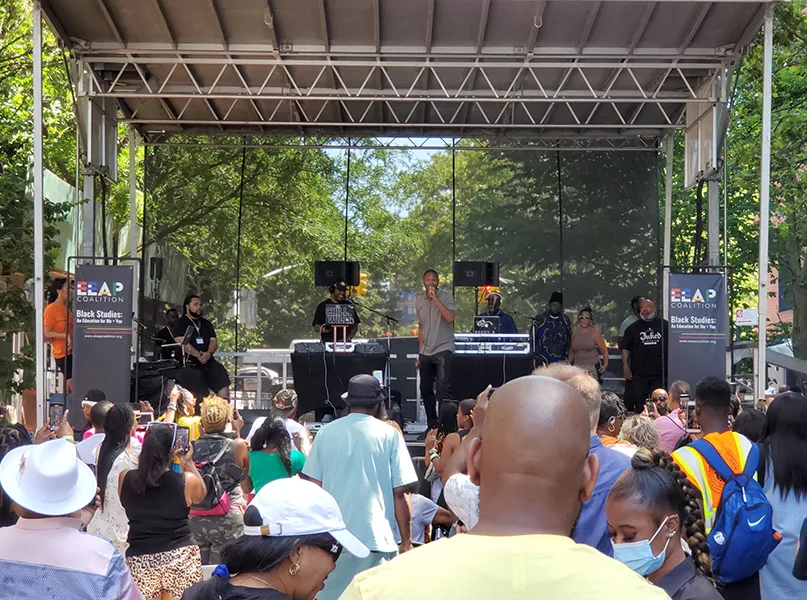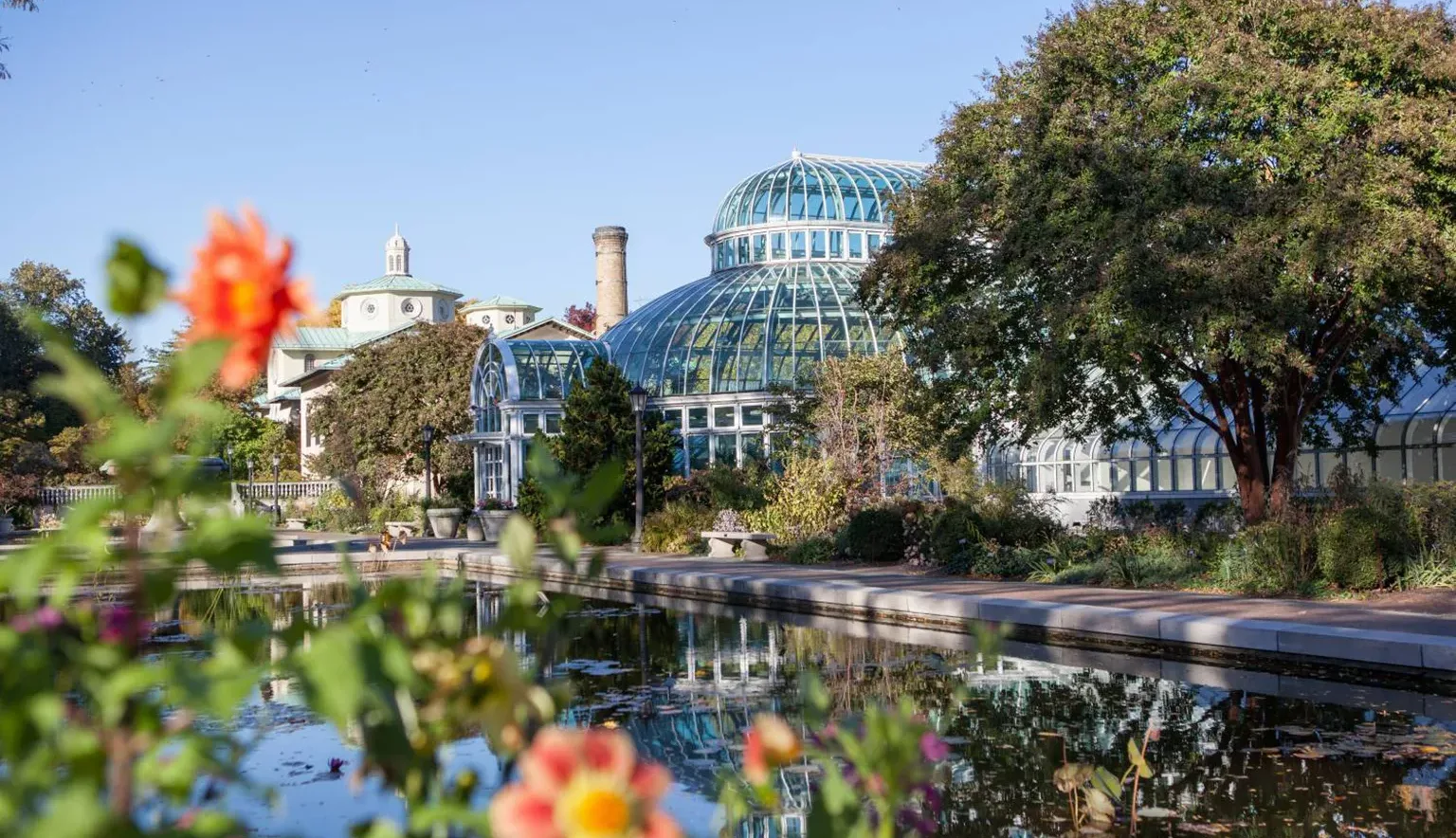We speak to Randy Peers, President and CEO of the Brooklyn Chamber of Commerce, about his passion for the borough and how its small businesses are the true beating heart of the city.
Q&A WITH RANDY PEERS, PRESIDENT AND CEO, BROOKLYN CHAMBER OF COMMERCE
For over a century, the Brooklyn Chamber of Commerce (BCC) has championed the voices of both big and small businesses as it continuously works to be a loyal protector and promoter of their interests. The chamber is characterised by an active civic spirit to ultimately improve the living conditions and social welfare of Brooklyn’s bustling corporate landscape, whilst also highlighting its lively tourism sector.
Firstly, can you talk us through the origins of the BCC alongside its initial vision and current goals?
Randy Peers, President and CEO (RP): Established in 1918, we are the voice of the Brooklyn business community. Our mission has been consistent over the past 106 years – to be the borough’s chief advocate for development and support, as well as economic growth.
Initially, we were known as the Brooklyn Civic Club, however, about six or seven years after our formation, we transformed into our current guise.
The borough has a small business economy with approximately 62,000 entities, 84 percent of which have less than 10 employees. Therefore, these companies don’t always have a say in what’s happening around them, so BCC seeks to be that consistent voice for the small business community, advocating for the things that matter to them.
What makes Brooklyn a good place for visitors to invest in?
RP: We have become an international brand in recent years; if you go almost anywhere in the world and mention Brooklyn, you will find somebody who wants to visit or live here. It’s even been said that one in seven people can trace their roots to Brooklyn!
Historically, the borough was founded over 300 years ago by Dutch explorers, so we’ve had an interesting trajectory throughout our heritage. The story of Brooklyn is really wrapped up in successive waves of immigrants who have made the area their home and left an imprint on the culture and vibrancy of the city. As such, we have always been a very welcoming and tolerant region for anybody wishing to come here.
For a long time, we were also the manufacturing centre for New York City, however, like most heavy industry areas after World War II, there was a decline in the level of manufacturing.
Subsequently, it took us a good 30 years to get back on our feet. However, we had a number of advantages; the first was our branded identity – people knew where Brooklyn was. Although the brand was somewhat tarnished during the 1970s and 1980s, as the borough was seen through a lens of urban decay and increased crime, we still had a distinctive identity. Therefore, the idea was to change the narrative so that what was once considered dangerous became edgy and hip in a simple form of rebranding.
More importantly, we had all this former heavy industrial land that could be repurposed for creative and new economy industries. This land has now been revitalised for both residential and commercial uses. For example, if you look at the north of Brooklyn, in places like Williamsburg, Dumbo, and Greenpoint, a lot of that land has been converted from former manufacturing uses to residential.
Meanwhile, if you look at neighbourhoods like Industry City, Sunset Park, Brooklyn Navy Yard, and Brooklyn Army Terminal, these are commercial spaces that have been transformed for the creative economy. This includes tech companies, marketing and design firms, and niche, small manufacturing industries such as food manufacturing.
We’ve really transformed our economy by repurposing former industrial spaces and rebranding the story of Brooklyn.
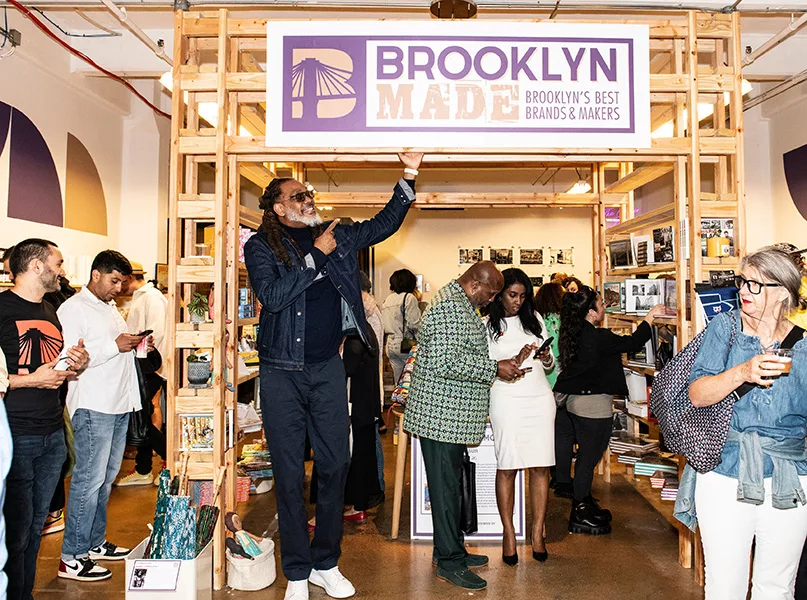
How important is the BCC to the growth of the borough’s businesses, and how do you achieve this?
RP: We’re the largest chamber of commerce in the state of New York and have four primary foundational principles: promotion, support, advocacy, and convening.
Our success lies in our ability to tell our businesses’ stories so they can receive greater exposure and sell more products and services. We do this by leveraging our communication channels, such as e-newsletters, networking and ribbon-cutting events, and social media, which all come under the promotional umbrella.
Regarding our support services, the BCC has always been at the forefront of providing technical assistance and we have several programmes that focus on helping small businesses to form and grow.
These include our NYC Business Solutions Center, a small business resource network, as well as our financing arm, Brooklyn Alliance Capital, a microlender that provides all levels of technical assistance, whether it’s marketing support, access to financing and legal services, minority and women business certification, and connecting to government agencies for regulatory purposes.
We’ve held a lot more of these programmes since the COVID-19 pandemic, as it obviously had an impact on many smaller companies.
Meanwhile, advocacy is our big-picture policy and involves the legislative work that we do on behalf of local entities. We regularly interact with our elected officials and policymakers to serve as a voice for these companies. For example, when legislation or policies impact small businesses, we articulate what the issues and concerns are.
As Brooklyn is one of the largest counties in the state of New York, it has a great number of representatives, which means we have a strong number of elected official delegations. Therefore, the BCC interacts with all levels of government, city, state, and federal agencies on behalf of our businesses.
Finally, convening is about bringing people from each industry together around the table. For instance, we manage the Tourism Council for Brooklyn, alongside other industry-based committees, such as real estate, development, healthcare, BioTech, and energy. We bring these industries of the local economy together so that we can work on collective issues with a particular sector.
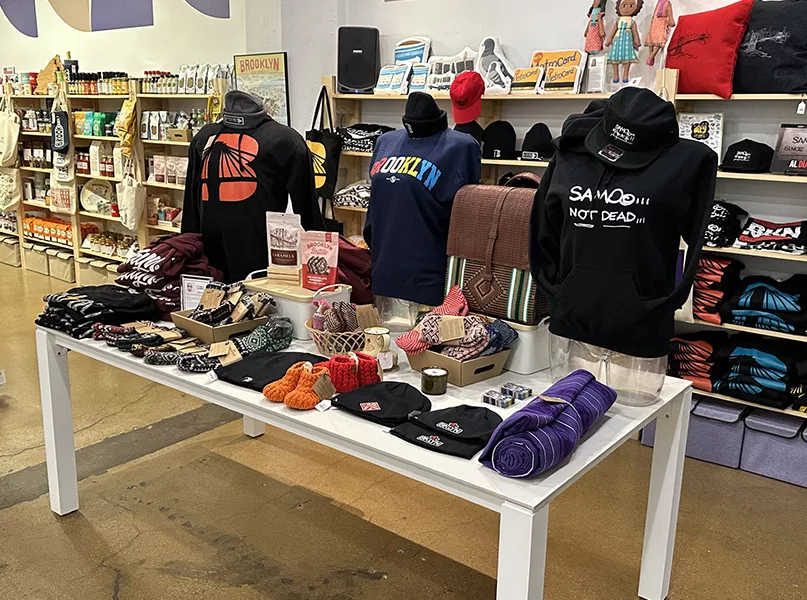
How has the tourism industry in Brooklyn changed in the last five years?
RP: The good news is that tourism in New York City has bounced back quite nicely following the COVID-19 pandemic. There were 62 million visitors to the city prior to the event, 15 million of which made it over the bridge to Brooklyn, making it the second most visited borough out of the five.
However, there have been some shifts in the post-pandemic era. For example, we’re not getting as many international tourists as we once did, particularly from China and Russia, but we are seeing more day trippers visiting from the tri-state areas to see Brooklyn’s attractions. In terms of numbers, we’re pretty close to the 15 million visitor mark which was our watershed high before the pandemic.
I would also say that despite Brooklyn’s huge size, many tourists tend to stay in the northern areas closer to Manhattan. Here, you can find hot areas such as Williamsburg and Dumbo located beneath the Manhattan Bridge underpass.
I would also encourage visitors to see other parts of Brooklyn, such as in the south and east. For example, Coney Island is the original ‘People’s Playground’, with its brilliant beach and wonderful boardwalk, as well as its remarkable amusement rides and attractions.
Brooklyn also has historic locations such as the Weeksville Heritage Center. As Weeksville was one of the first free Black communities in the post-Civil War US, this historic neighbourhood is an amazing place to visit.
I would also encourage travellers to spend time in one of the many immigrant communities that we have. You can go to Brighton Beach and feel like you’re in Ukraine or go to parts of Sunset Park and feel like you’re in Latin America or China. We also have an area called Little Caribbean, a vibrant community representing the many wonderful nations of the islands.
Due to the rich mix of cultures, we have many authentic restaurants across the borough. We like to eat in Brooklyn, and it’s all about coming together around food; as such, our restaurant scene has really progressed to rival even the top restaurants in Manhattan.
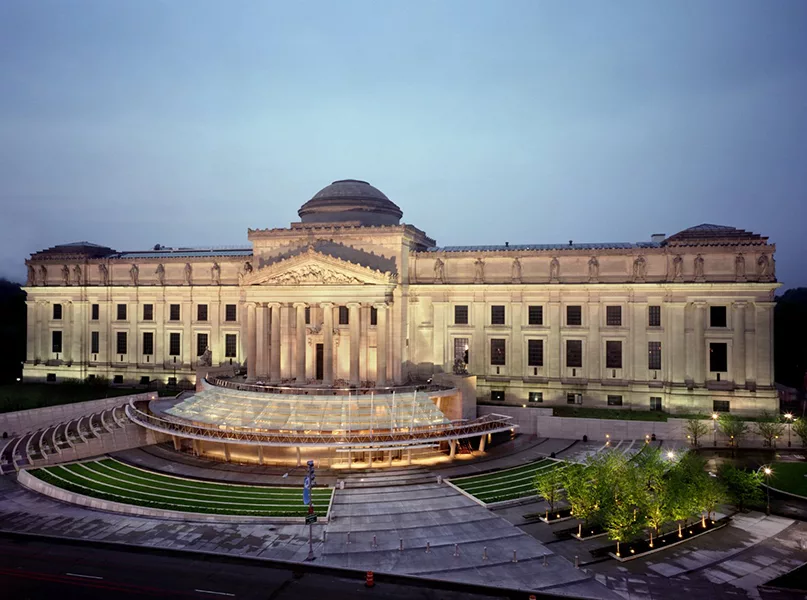
Please tell us more about your annual events for members and how you incorporate popular attractions?
RP: We hold a lot of what we call ‘big ticket’ events, which recently included our Black History Month celebration held at the Weeksville Heritage Center in February. This is an amazing event where we honour some of our business and civic leaders from the African American community here in Brooklyn.
We also had an Asian-American History Month celebration on 23rd May in Industry City, which comprised a night market with lots of food vendors as well as cultural performances across the area. We hold other more industry-specific events for the not-for-profit (NPO), energy, and real estate sectors, alongside our gala.
We also have our Brooklyn Made Store that we opened over a year ago in Industry City, which has become an amazing tourist attraction in itself. It is super unique for a chamber of commerce to have its own store, and we are proud to feature independent Brooklyn makers, designers, and small business owners who wouldn’t necessarily get this type of exposure.
The products we sell include packaged food, apparel, home goods, make-up and beauty supplies, and jewellery, as well as an art gallery with rotating exhibitions called the Brooklyn Made Corner Gallery.
Industry City is a former heavy industrial campus spanning six million square feet that has been repurposed for the creative economy and retail sectors. It’s a work-play environment – there are food courts, restaurants, distillers, and Li-Lac Chocolates, one of the oldest chocolate makers in the state, alongside the Brooklyn Made Store, where we often hold events.
These initiatives highlight Brooklyn designers and creators who are from diverse communities. In fact, 83 percent of products on the shelves are made by minority and women-owned makers, designers, and business owners. As such, we recently held an event for Women’s History Month to celebrate these creatives.
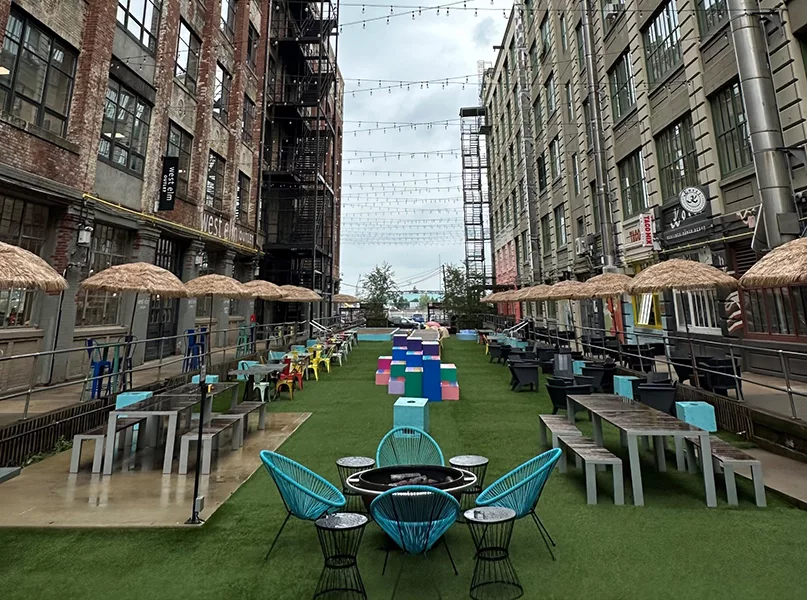
In what ways does the BCC put the borough on the map for international visitors?
RP: We have an international division of the BCC to conduct trade shows and exportation work on behalf of businesses who want to open up their markets overseas.
Our next step is leveraging the Brooklyn brand globally by working with foreign delegates, having held 38 delegations so far. What’s great is that delegates now come to New York City and visit the BCC to find out more about the area. We generally roll out the red carpet and talk about all the wonderful things the borough has to offer, which they then take back to their home nations.
We collaborate frequently with South Korea and the city of Seoul, in particular. There’s actually a neighbourhood in the city called Seoungsu-Dong, which is known as the Brooklyn of Seoul.
We also work with Korean entrepreneurs who want to test their products in the US. Known as proof of concept, we help embed their products in Brooklyn-based companies so they can be analysed in the wider marketplace.
This is also an example of how we’ve taken on a global role to help our businesses locally and leverage the Brooklyn brand on a worldwide scale. Our international division’s tagline is ‘Brooklyn – a bridge to the world’ in reference to the iconic Brooklyn Bridge.
Finally, how does the organisation support local businesses to provide an authentic experience for visitors?
RP: We’ve started to notice many more visitors venture to smaller neighbourhoods seeking the authentic Brooklyn experience.
Rather than exclusively going to see popular cultural attractions like the museum, they want to experience the unique commercial corridors that reflect the immigrant and ethnic communities we have here. They also want to eat in small and intimate restaurants – we’ve got real, mom-and-pop, homegrown food, so why would you dine anywhere else?
Similarly, we have many super-small businesses for people to enjoy. I encourage visitors to go to Tompkins Avenue because many of the companies are owned by Black female entrepreneurs. Whether it’s food or fashion, they put on a big ‘Open Streets’ event every summer where they close the road to hold a street fair, so travellers can experience the real Brooklyn.
We’ve really got it all here – a short walk of just a few blocks and it can feel like a completely different place. We encourage visitors who are seeking out an authentic experience to visit the Brooklyn Made Store and we can link them to the different parts of the borough that they want to see.
